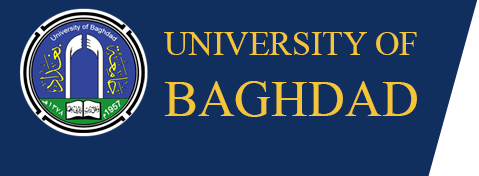Production Egg Yolk Antibodies (IgY) in Hens By Using Glucosyltransferase purified from local Isolate Streptococcus mutans (Serotype C)
Prepared by:
Dr. Essam Fadhil Alwan/Institute of genetic engineering and biological technologies for postgraduate studies, University of Baghdad
ABSTRACT
Streptococcus mutans have been proposed as the main etiological agents of dental caries and high levels of mutans streptococci in the plaque is correlated with a higher risk for dental caries. Seventy five plaque samples were collected from human teeth. Forty two samples were considered to be positive bacterial isolates using MS-agar (Mitist Salivares agar). Thirty five isolates were considered belonging to the group Streptococci; among these isolates 29 isolates were expected to be belonging to mutans streptococci group according to ability of producing special kind of exopolysaccharides. Twelve isolates were considered as S. mutans with a percentage of 41% depending on staining with triphenyltetrazolium chloride and tolerance with NaCl; 6 isolates were classified as serotype C by using Lancefield grouping identification. These isolates were tested for production of extracellular Glucosyltransferase (GTF) and cell-associated Glucosyltransferase (CA-GTF) through determination of their enzyme specific activity. All isolates were able to produce the enzyme; Streptococci isolate (H5) which identified as Streptococcus mutans serotype C was selected as the best producible isolate for GTF with a specific activity of 2.6 U/mg. It was found that GTF of the chosen isolate (H5) was produced during the middle stationary phase (18-35 hr.) and its maximal productivity was reached at 22 hr. Purification of S. mutans serotype (C) H5 GTF were done by ammonium sulfate, ion-exchange chromatography (DEAE-Sephacel column), and gel-filtration chromatography using Sepharose 6B column. The best percent saturation use for precipitating GTF by ammonium sulfate was 20-40% with specific activity 2.4 U/ml. Two purified GTF enzymes (GTF-I and GTF-II) were detected with specific activity 35.5 U/mg, 8.3 U/mg after 96.1, 22.6 fold of purification respectively with yield 17.2%. Purification S. mutans CA-GTF (H5) were done by 8M urea, ammonium sulfate, DEAE-Sephacel column and gel-filtration (Sepharose- 6B) column chromatography. The purified CA-GTF was detected with specific activity 18.6 U/mg after 24.5 fold of purification with yield 20.2%. The ability of GTF and CA-GTF of S. mutans to stimulate the immune system of avian hens was tested. The intramuscular rout injection of two purified antigens (GTF and CA-GTFand whole bacterial cell ) in the chest of experimental hens was done . IgG from egg yolk hens (IgY) was purified with the immunization period (9 weeks) by using polyethylene glycol (PEG) precipitation and protein content of IgY antibodies was estimated from egg yolk and serum. About 1 ml of purified IgY egg yolk samples GTF and CA-GTF, protein contained 7.06, 6.97mg/ml, respectively while in serum protein content about 2.6 and 3.1 mg/ml, respectively. The immunological specificity of the two IgY samples preparations was assessed by ELISA test and the best sample that produced high titration was IgY-GTF with concentration 3.5 mg/ml, followed by the IgY-CA-GTF and concentration 3.28 mg/ml respectively. The IgY-GTF inhibited approximate 75% of the specific activity GTF, while IgY-CA-GTF inhibited 50% of the specific activity CA-GTF. A double immunodiffusion test for detection of the immune response between anti-GTF IgY and purified GTF and CA-GTF antigens were recorded. The immunological response of anti-GTF was stronger more than anti-CA-GTF. It was indicated by the appearance of precipitation lines on the surface gel between anti-GTF and two antigens GTF and whole bacterial cell while in the anti-CA-GTF only with homologues antigen.

